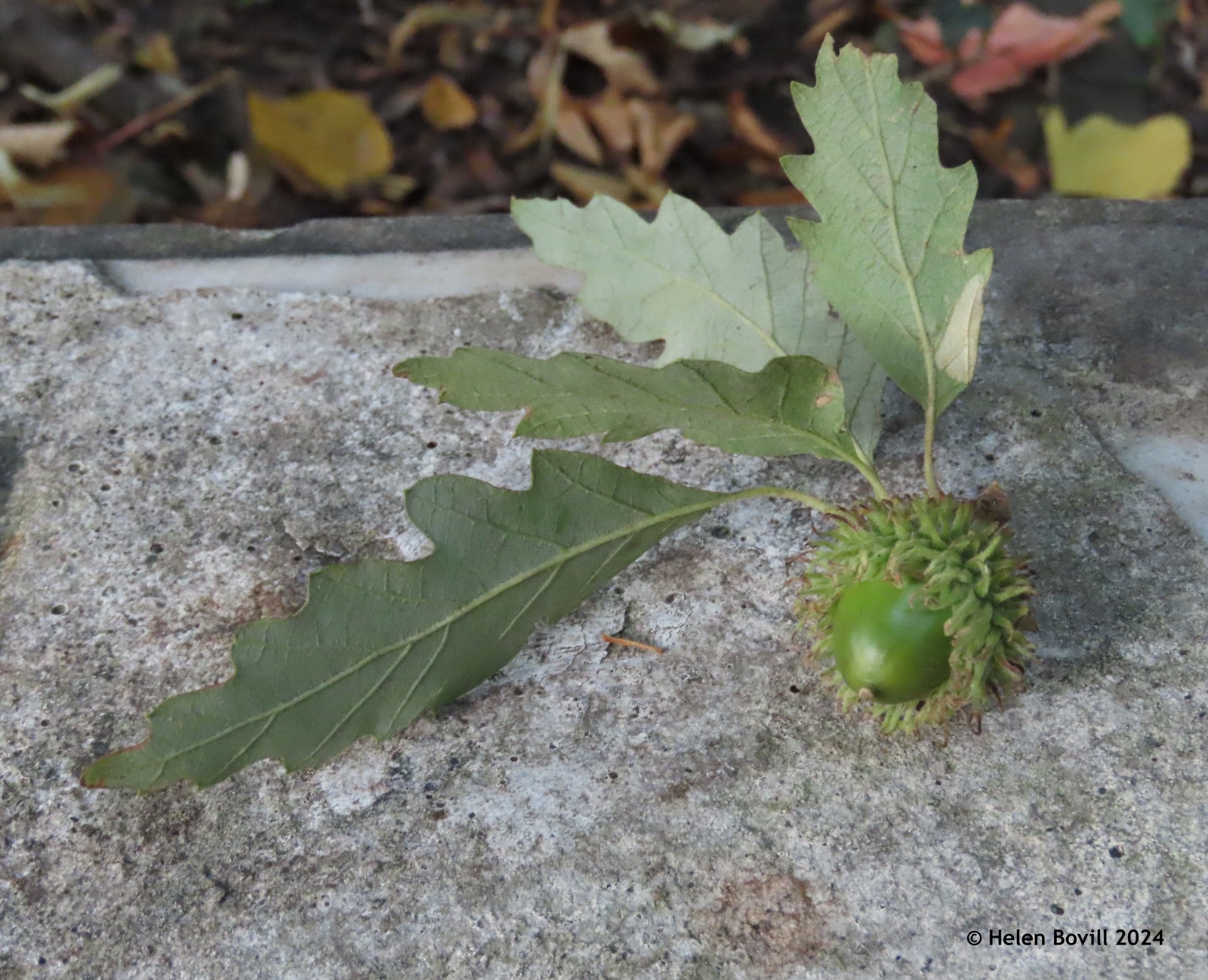Autumn Fruits Special
This month marked the end of summer and the start of autumn. The weather was very mild, dry and sunny for the first three weeks of the month. Many of the shrubs and trees are now bearing fruit and providing plenty of food for the cemetery wildlife. To mark such abundance, this month’s report is an autumn fruits special.
Plants, Trees and Shrubs
Fruit
The Dog Rose near the Cholera Monument is now bearing fruit, known as hips (pictured above).
I found a small group of European Barberry plants not far from the main gates. Their small red berries add a nice splash of colour to the greenery. I found lots of orange and red berries on the Firethorn bushes growing along the south path and also at the back of the Spring Bank West verge. Firethorn is also known as Pyracantha.
The Japanese Skimmia now has a few red berries on it. I noticed that some had already been eaten by the cemetery wildlife. The Yew tree in the Quaker Burial Ground has berries on it, many of which had fallen to the ground. I couldn’t see any on the tree because of the darkness of the leaves and the lack of light.

The majority of the fruits in the cemetery fall into two colour sets – red/orange, and black/purple. Here is a selection of fruits from the latter category:-

Brambles and Elder grow throughout the cemetery and are a particularly good source of food for the cemetery wildlife. I noticed Blackbirds in particular eating the elderberries.
There is a patch of Cuckoopint or Lords-and-Ladies growing in a central part of the cemetery. I’ve never seen the plants reach their fruiting stage in an upright position though. They usually seem to wither and end up flat on the ground. I don’t know if this is because they get trampled by visitors to the cemetery or if they’re just not strong enough to remain upright.

I found lots of acorns on the ground from one of the Turkey Oaks along the south path. They seem to have fallen prematurely in the recent high winds, as none of them looked ripe.

Flowers
A small patch of Feverfew is still in flower on the Spring Bank West Verge.

But in general, I didn’t find many plants in flower this month. I found a few flowers on some of the brambles, and the Ivy is now in flower. It’s easy to walk past without seeing their flowers because they look so different to other flowers. At the moment they’re providing food for insects; later their berries will feed a lot of the cemetery’s birds.

The Red Campion and Creeping Thistle is still flowering. The only new flower I found this month was Ivy-leaved Cyclamen.

Fungi
Continuing with the fruity theme, whenever you see any type of fungi what you’re looking at is the organism’s fruiting body. The main part of a fungus is made up of lots of fine threads, growing under the surface and therefore hidden from view. Please see the link at the end of this report for more information.
The largest fungus I found was one I wasn’t able to identify for certain. It could be either a Birch Polypore or a Dryad’s saddle.

It looks like the cemetery wildlife found it before I did!
Quite a lot of the fallen logs have smaller fungi and lichens growing on them which can also be difficult to identify. But one I was able to identify was Witches’ Butter.

Birds
I noticed quite a few fledglings in the cemetery this month – Robins, Goldfinches, Blue and Great Tits, and Chaffinches. Some of these were towards the end of the month. It looks like the generally warmer weather has allowed some of the cemetery’s birds to raise a second brood later in the season.

I was hoping I might see some baby Bullfinches, but I haven’t seen any Bullfinches this month. The adult birds that I used to see regularly just don’t seem to be around anymore.
Insects
There were still some bees, hoverflies, ladybirds and other small insects around. I saw dragonflies on a couple of occasions.


I started to notice wasps in and around the cemetery this month. It occurred to me that I never stop to look at this common species so this time I did!

I don’t often see moths in the cemetery, but this month I saw a tiny Plume moth of some sort. It didn’t stay still for very long though, and landed amongst some nettles.
Butterflies
I saw at least five different species of butterfly this month, but in singles rather than in any sort of numbers. There are 3 species of white butterfly I’d expect to see in the cemetery at this time of the year – Small White, Large White and Green-veined White. I caught occasional glances of a white butterfly or two but I wasn’t able to confirm the species. I did see Comma, Speckled Wood, Red Admiral and Holly Blue though.

Conclusion
After a mild and dry start, September ended with some colder weather, and a couple of wet and very windy days. Fortunately, the rain wasn’t heavy and prolonged enough to turn the footpaths muddy. The avian branch of the cemetery wildlife seemed to cope with the wind, and I watched as the smaller birds seemed to time their short flights to fit in with the lulls between gusts. However, the wind brought down a medium sized tree at the western end of the cemetery, blocking the northern footpath leading into Western Cemetery.

And finally ……

Link to Fungi information –
How are fruit bodies made :: British Mycological Society (britmycolsoc.org.uk)



Thanks Helen